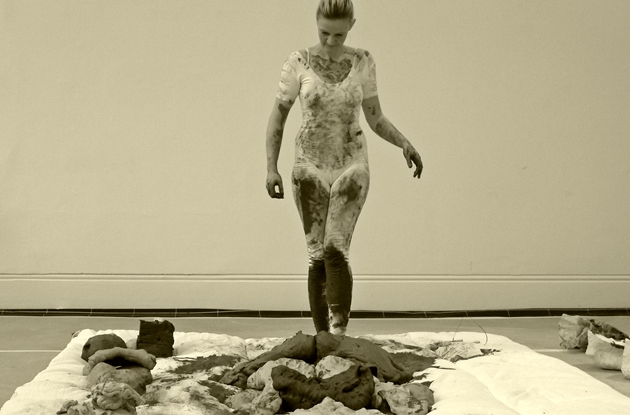The sculptural-based part of 'Who looks outside, dreams; who looks inside, awakes'
In this part of the work 'Who looks outside, dreams; who looks inside, awakes', I showed elements from the performative act in a gallery space, Great Western Studios, London, 2012
 The buckets:
The buckets:
In the performance, I used some special customised buckets, specially made for the purpose of being used in a performance. Modelling clay on my body, taking the exact imprint of the shape of the gap that occurs between my thighs while working with the clay during the performance. The form of these buckets serves both an aesthetic and functional purpose to strengthen the link between the artist's movements of the body and the performance and the act as a ritual.
The outfit:
I showed the outfit I was wearing in the performance, the outfit almost took on a skin like appearance in the areas where the traces and layers of clay laid thick and accumulated.
The book:
The book showed images from the performance and small text fragments, some my own statements of the intention in the performance, some quotes from others who frames the intention of my project. The book is made without any constituted end or beginning. But in and endless spiral circle so it in it format mimic one of the most important contents of the performance; return and revisit in an endless cycle. Another inspiration for the shape of the book was the notion about the third meaning; known from cinema, where we automatically make connections between images. If we see a man looking out the doorway in one frame and the moon in the next frame, we instantly assume he is looking at the moon, though we have actually never been told. So the pages was divided horizontally, so the bottom and top pages can be flipped independently of each other so endless combinations of images and text can be shown next to each other, making up different meanings.
Both the buckets and the book are examples of how things can change appearance constituted on their context. The traces coming from the performative process are meant to live on after the event; maybe as objects, however significantly more important as seeds planted in our awareness of how we approach the practises of our life.
